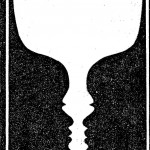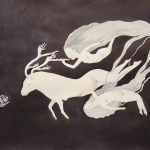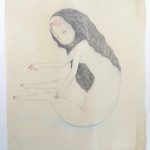Unfortunately, we do not have a point of view gun. Our best tool for creating and using narrative point of view is manipulating the “reader’s share,” or what Eric Kandel identifies in The Age of Insight as the element the reader brings to the experience of reading your work. Your job as the writer is to explore and identify which point of view will make your reader deduce meaning in the most effective and efficient way. In magic realism, it can mean using a familiar object or vehicle to create an extraordinary perspective, often for two characters to form deeper conflict and connectivity.
Third person will often allow more objectivity, and therefore, the reader will have more room to consider and explore the characters and scenarios; however, first person can offer opportunities for such close in experience that readers are drawn in with the up close and personal effect. Second person can be tricky. Readers don’t necessarily like to be “told” what to think or what their positions should be within the context of a story; however, you can use and manipulate this reader’s instinct in order to “challenge” your reader and make him or her consider him or herself within the context of your narrative. In this instance, make sure to remember that some of your readers may purposely buck this manipulation. You can use this to your advantage as a storyteller. Write to both the reader who will willingly accept your narrative and magic realism while writing to the reader who will rebel mindfully against them.
Example: In the above film excerpt from Hitchhiker’s Guide to the Galaxy, some women might laugh out loud, siding with a woman’s perspective. Some men might too. Some men might roll their eyes and mutter complaints. Consider how this excerpt speaks to each of these reactions and uses them in the overall context of the narrative and humor. Also notice how the scene is essentially mundane. A cavelike room. A gun. The characters each have interesting quirks, sure, but overall, if you did not know you were on an alien planet, beneath a giant robot, you would think they might be in a nearby park cave. The “point of view gun” is essentially the most extraordinary element within the scene. As the characters point the gun at each other, we come to realize back story that has a science fiction feel, but the SF elements are discussed in a very real and believable way. They might as well be talking about a metaphorical “blowing up” of a party that has destroyed relationships. We want to stay solidly in magic realism for this workshop, and so, we want to limit the fantastical/SF elements in our settings.
Second person and humor, together, can make a very compelling voice. Trillion, the female character in the above Adams’ excerpt, uses a “you” factor, or second person factor, quite literally within the context of the narrative while the narrative voice uses a third person aside to create further context for the scene, explaining the history of the point of view gun. How might you use a “you” factor or multiple points of view in your own work in obvious or subtle ways so to draw your readers in so thoroughly they are able to create meaning from your characters, settings, and scenarios without your characters explicitly telling them what this meaning is or should be. Allowing each reader to make his or her own individual meaning is the art of great storytelling. Read the below short story, “The Nose,” by Gogol. Notice how the point of view creates a rare and interesting angle.
Reading Assignment
Writing Assignment
Choose one or two favorite characters you have already written. Now, write these characters into a new story with an extraordinary object–i.e. the point of view gun, a detachable nose, etc. Other than the one extraordinary object, allow your characters to stay relatively familiar, down to earth, real.
Spend time exploring different points of view for your characters. Choosing the perfect point of view will add further depth and landscape within your narrative. For this reason, point of view is not only a modality for narrative voice, it is also a strategic tool for exploring the work both on and off the page.
After you have written your first draft with your chosen point of view, write a second draft with another point of view. Decide which PoV you like best and submit that one story for this week’s workshop.
Point of View (from Purdue Writing Lab)
You already understand point of view, but for identification purposes, we’ll just list the definition here: Point of view refers to the perspective the author uses to tell the story. Though authors may switch and combine points of view, in traditional fiction there exists three points of view:
- Third Person: In third person, the author tells the story. But the author decides if the events will be objectively given, or if she can go into the mind of every character; to what degree she can interpret that character; to what degree she can know the past and the future; and how many authorial judgments will be allowed. For example, Chekhov uses Third person limited omniscient in his story, “Vanka.” Chekhov tells us when Vanka is thinking, but he doesn’t go into detail about what Vanka is thinking about. Chekhov lets the action show what Vanka is thinking about. If Chekhov had written the story in third person omniscient, then we would know everything that was on Vanka’s mind, and we would be given a great deal of interpretation about why Vanka acts the way he acts. If Chekhov had chosen to write “Vanka” in Third person objective, we would only get those details that could be outwardly observed. Vanka would not pause to think twice about how he should begin his letter to his grandfather. We might see him lift his pen, and then start writing again, but nothing more.
- Second Person: Second person is unusual in fiction and is more common in poetry. In second person, the character is not referred to as he or she, or by name, but rather as “you.” If Chekhov had written “Vanka” in second person, it would begin like this: “You, a boy of nine, who had been for three months apprenticed to Alyahin the shoemaker, were sitting up on Christmas Eve.”
- First Person: Authors use first person when a narrator who is also a character in the story speaks. Baldwin’s story, “Sonny’s Blues,” is written in first person, and begins: “I read about it in the paper, in the subway, on my way to work.” The narrator who speaks is Sonny’s older brother, and he is also the main character in the story.
Discussion
What has been your favorite point of view in the past–i.e., which point of view have you usually migrated toward? Which points of view will you focus on this week?







